A rainbow on a cloudy day, or why do Icelanders love colors so much?

Before Icelandic streets began to sparkle with rainbow colors, architecture on the island was decidedly more austere, and for practical reasons. For centuries, residents built with what was at hand, primarily from nature's limited resources. Although birch trees once covered nearly 40 percent of Iceland's land area, intensive logging led to rapid deforestation. Wood became a scarce commodity – valuable and used only when it was irreplaceable. Nordic builders devised the idea of using local stones as the foundation base, and mineral turf – a common layer of earth covered with grass, more associated with pasture than construction material – took over as the main building material.
As early as the 9th century, settlers were cutting thick sheets of it and inventively arranging them on the walls and roofs of their homes. Green, common, and free , turf was the answer to Iceland's building shortages. Moreover, it proved to be incredibly functional, acting as a natural insulator in the harsh climate— retaining heat, protecting against wind and frost, and allowing structures to almost blend into their surroundings.
This is how the distinctive peat houses were created, blending into the landscape to such an extent that they almost disappeared from view. Natural colors dominated them – greens, browns, and grays. Only later, when new materials and possibilities emerged in Iceland, did architecture begin to acquire the aesthetics that today attract tourists' attention and camera lenses. But that's a completely different – and much more colorful – story.
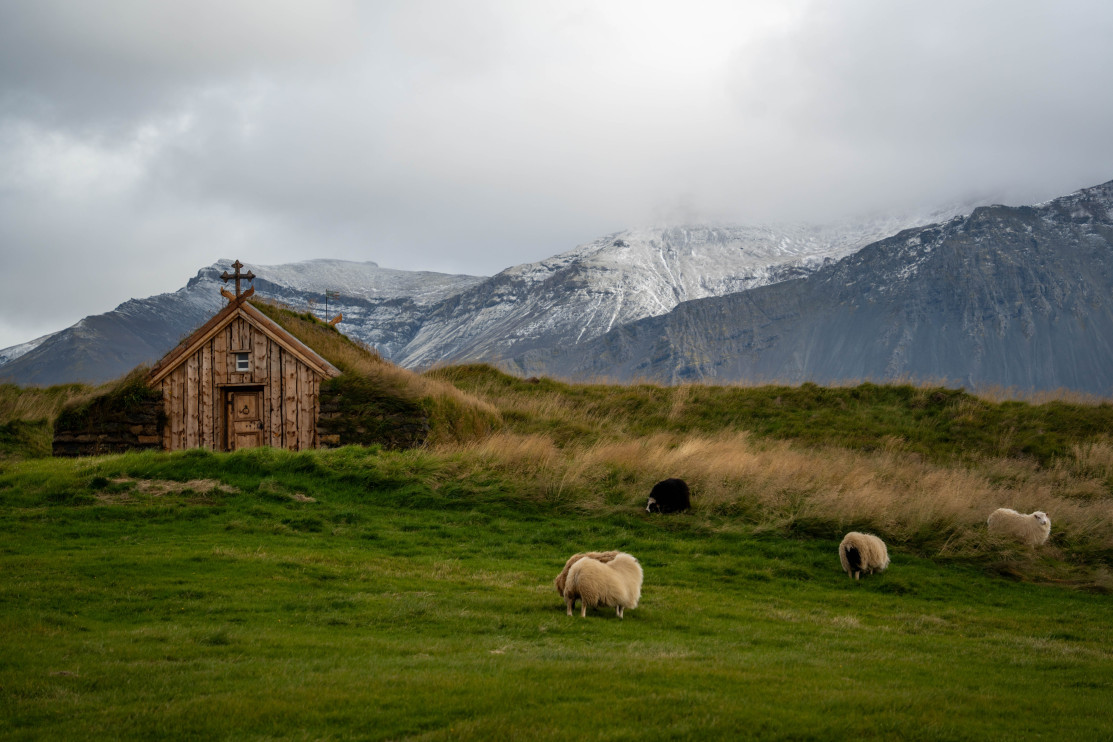 A roofed church in a green valley in Iceland / Shutterstock / Ron Costi
A roofed church in a green valley in Iceland / Shutterstock / Ron CostiThe color revolution on Icelandic streets began with... corrugated iron. In the 19th century, with the beginning of imports of building materials from Great Britain, thin, durable sheets appeared on the island – an invention of the 1920s. They quickly gained popularity, proving effective in harsh conditions. Interestingly, a significant portion of the material found its way to Iceland through trade with the British, who willingly exchanged the sheets for local sheep. To prevent rust, they began painting them, and since it was time to pick up a brush, why not use vibrant, cheerful colors? Thus was born a new aesthetic – initially a bit chaotic, but gradually becoming more thoughtful. The colorful walls brightened the narrow streets, provided a welcome boost during the long winter months, and also looked stunning in photos.
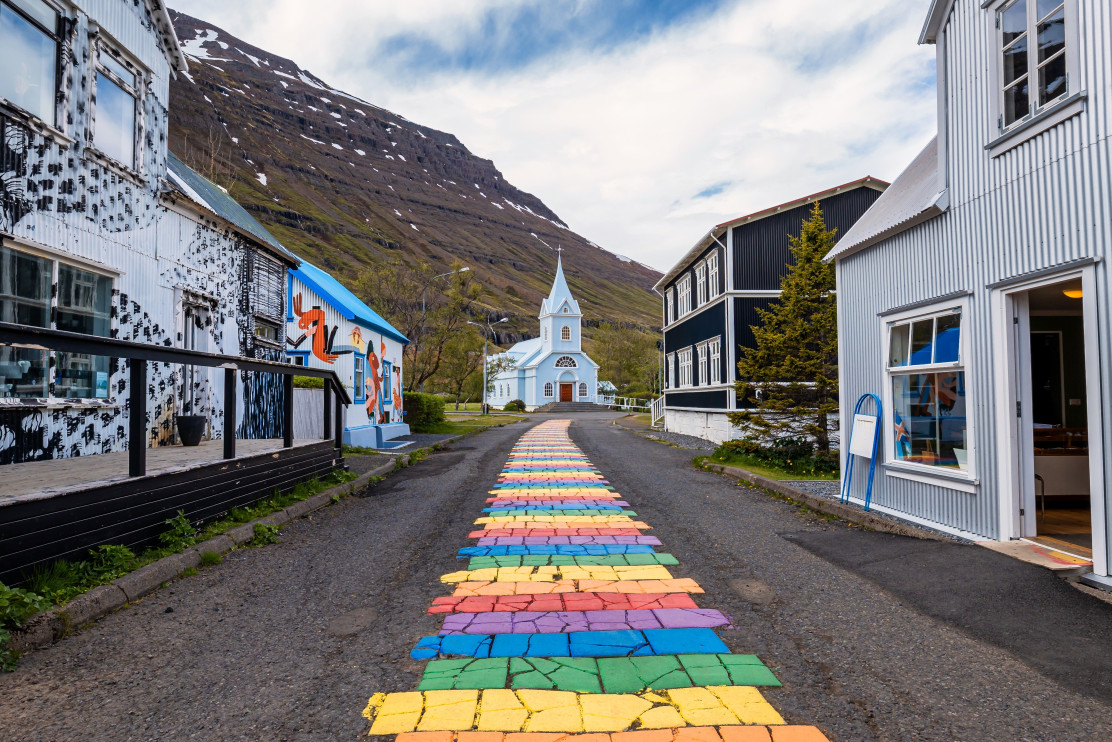 Rainbow Street in Seyðisfjörður, Iceland / Shutterstock / True Pixel Art
Rainbow Street in Seyðisfjörður, Iceland / Shutterstock / True Pixel ArtOver time, color has become a true star of local tourism. Take the charming town of Seyðisfjörður, where a rainbow path leads straight to a postcard-perfect pastel-blue church. Or Siglufjörður, once a bustling fishing port in the far north of the Tröllaskagi peninsula, now a popular spot on the island's map with houses in vibrant shades of red, yellow, and blue. It's here that the colorful Herring Era Museum is located, recounting the herring heyday with humor and nostalgia.
Reykjavik? It's not far behind either. Iceland's capital is a veritable open-air museum – walls covered in murals, townhouses that look like they came straight out of a children's picture book, and streets that beg to be photographed. Especially Skólavörðustígur, better known as Rainbow Street – a must-see for anyone looking for great shots.
Where to find the most beautiful colorful houses in Iceland? ReykjavikReykjavik's Old Town is probably the best place to see buildings clad in painted, corrugated iron. Murals adorn almost every available wall, from the side facades of cafes to cul-de-sacs. They depict motifs drawn from nature, Norse mythology, music, and social themes, creating colorful galleries within the urban space. You can admire this colorful mosaic from above by taking the elevator to the viewing platform of Hallgrímskirkja, Iceland's largest church. Be sure to also explore these three streets: the quiet, picturesque Frakkastígur, the artistic Vesturgata with its large-scale murals, and Skólavörðustígur – the aforementioned Rainbow Street.
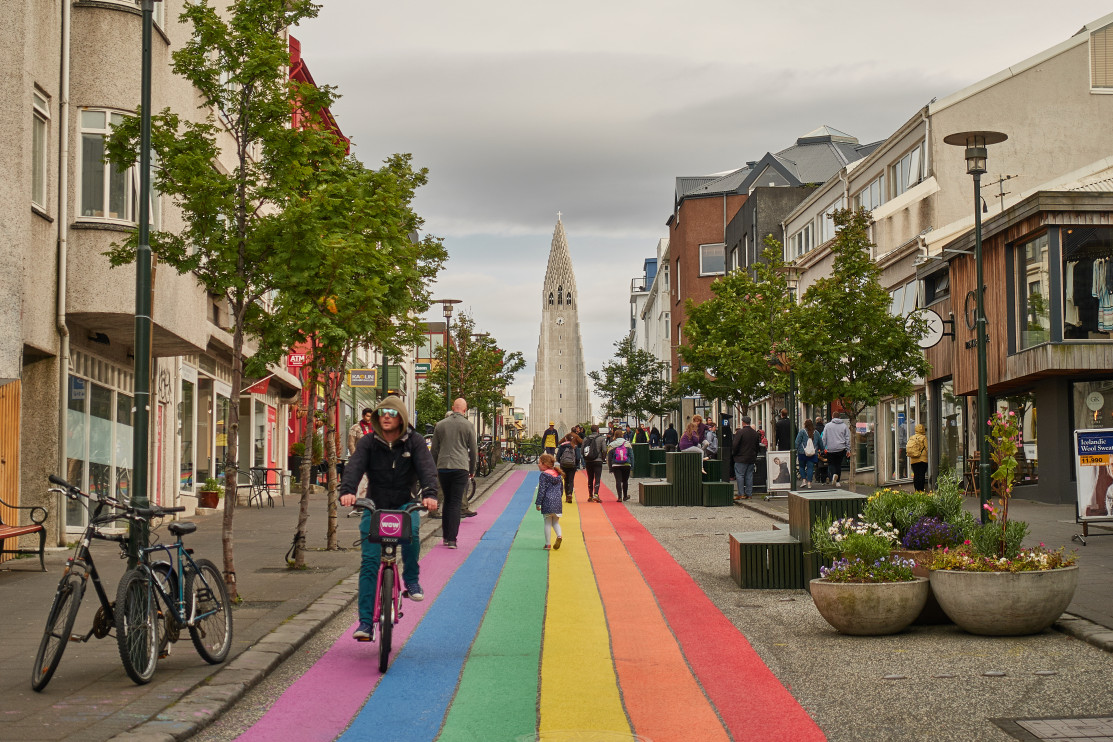 Rainbow Street in Reykjavík / Shutterstock / Mat1ss
Rainbow Street in Reykjavík / Shutterstock / Mat1ssIceland's second-largest city captivates with its tranquility, and its architecture reflects the village's Danish heritage. Strolling along the streets of Hafnarstræti and Aðalstræti, you can admire turn-of-the-20th-century buildings , meticulously restored and painted in a variety of colors. Be sure to visit the verdant Leikfangahúsið, or Toy Museum —it's a delight not only for children.
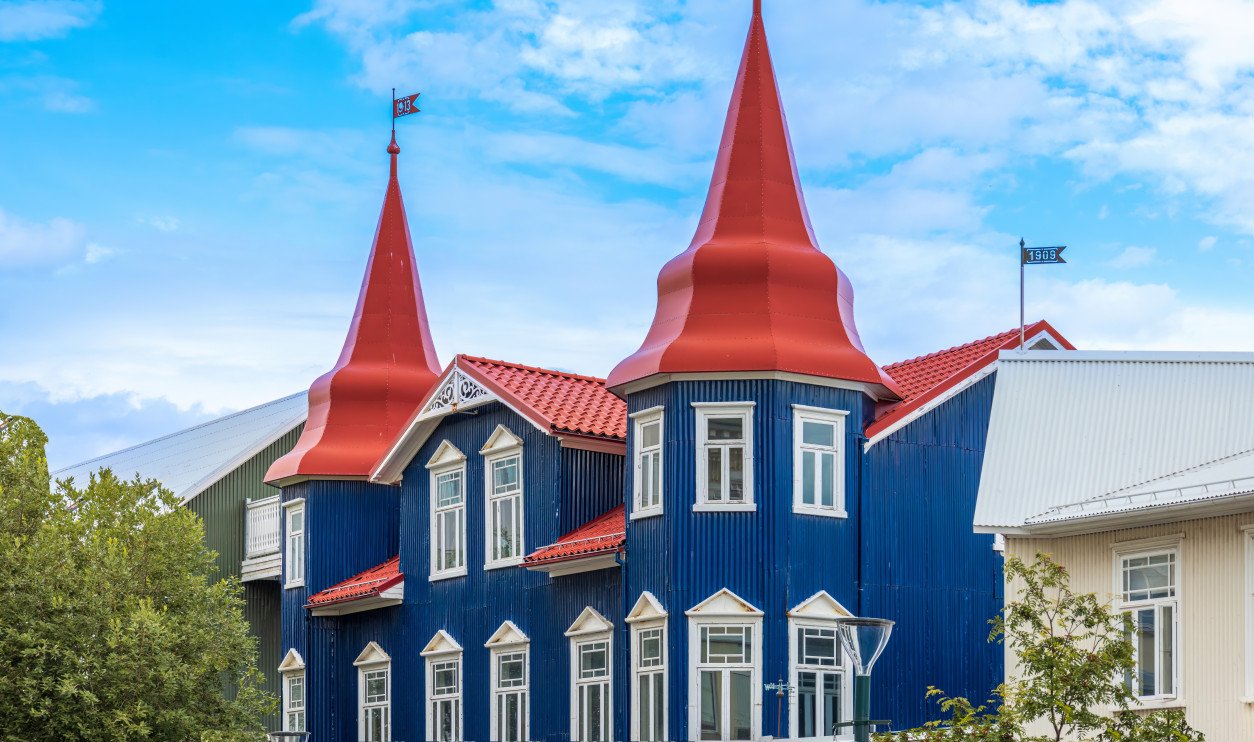 Akureyri in Iceland / Shutterstock / eskystudio
Akureyri in Iceland / Shutterstock / eskystudioAs the fishing industry in Siglufjörður declined, this small port in the far north of Iceland turned to tourism. Interest in it was boosted by the Icelandic noir series "Trapped," in which the town played a prominent role. Here, you can admire the historic buildings along the Gránugata waterfront, distinguished by their red, blue, and yellow facades.
Húsavík, the capital of Icelandic whale watching, also boasts plenty of colorful accents. A hotel painted the color of a cloudless sky and a historic blue house from 1903 are just some of the gems you can spot while strolling around.
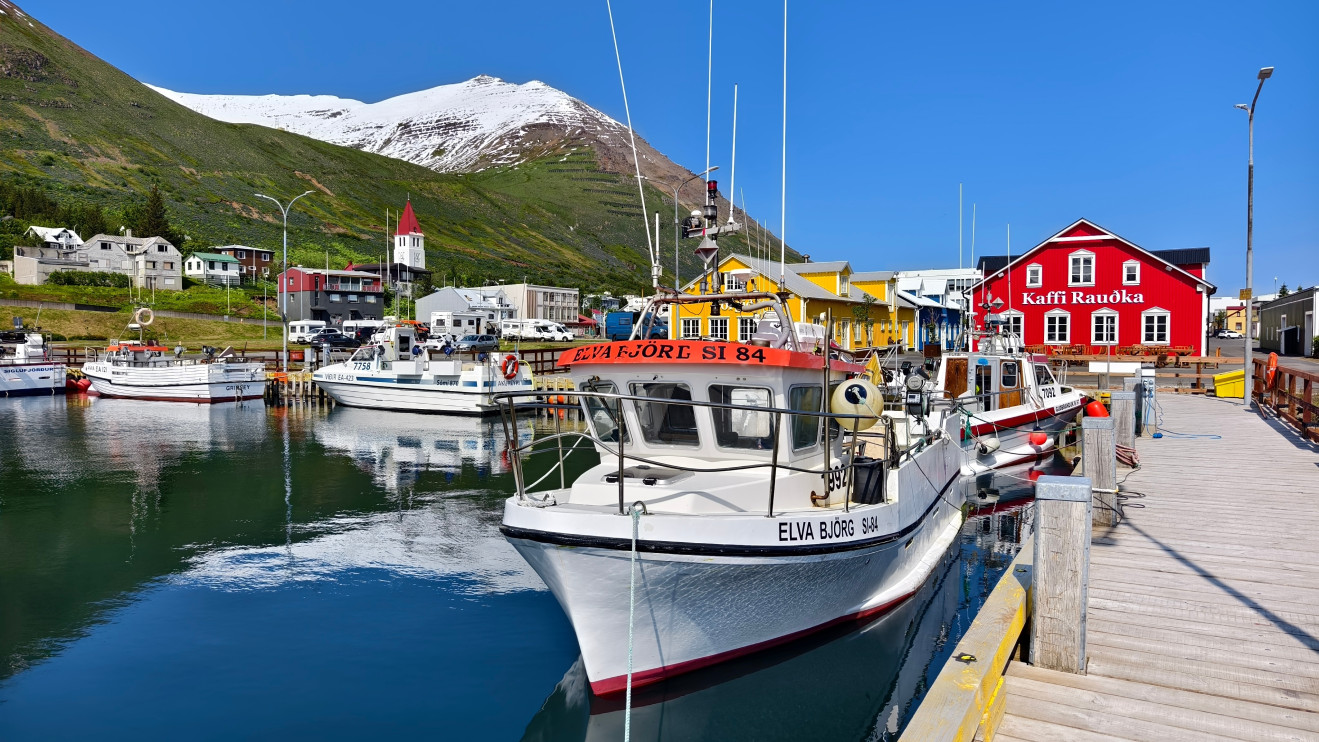 Siglufjörður / Shutterstock / Petr Podrouzek
Siglufjörður / Shutterstock / Petr PodrouzekStykkishólmur, a port on the northern coast of the Snæfellsnes Peninsula, also boasts a wealth of historic—and colorful—buildings. The oldest building, the Norwegian House, which houses the local history museum, is striking in its deep black, but right next door, along Aðalgata Street, stretches a row of houses in vibrant colors , ranging from sunny orange to glacial turquoise.
 Stykkisholmur / Shutterstock / Mihai_Andritoiu
Stykkisholmur / Shutterstock / Mihai_Andritoiu
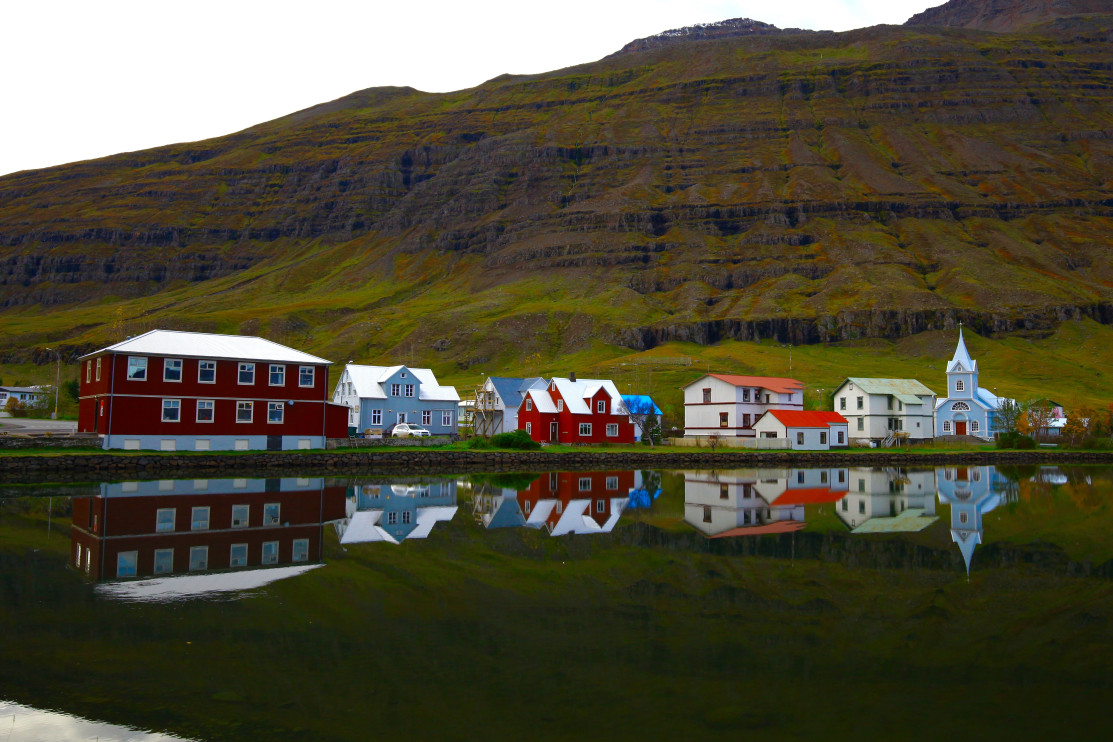 Seyðisfjörður / Shutterstock / Anzio Chou
Seyðisfjörður / Shutterstock / Anzio Chou



